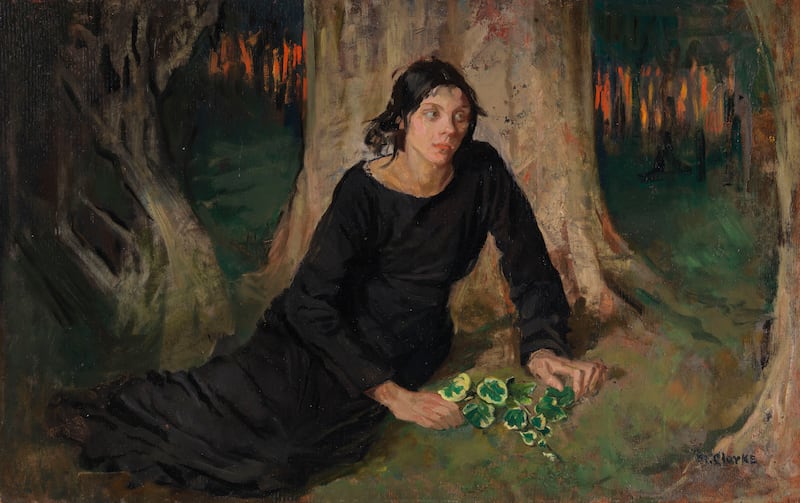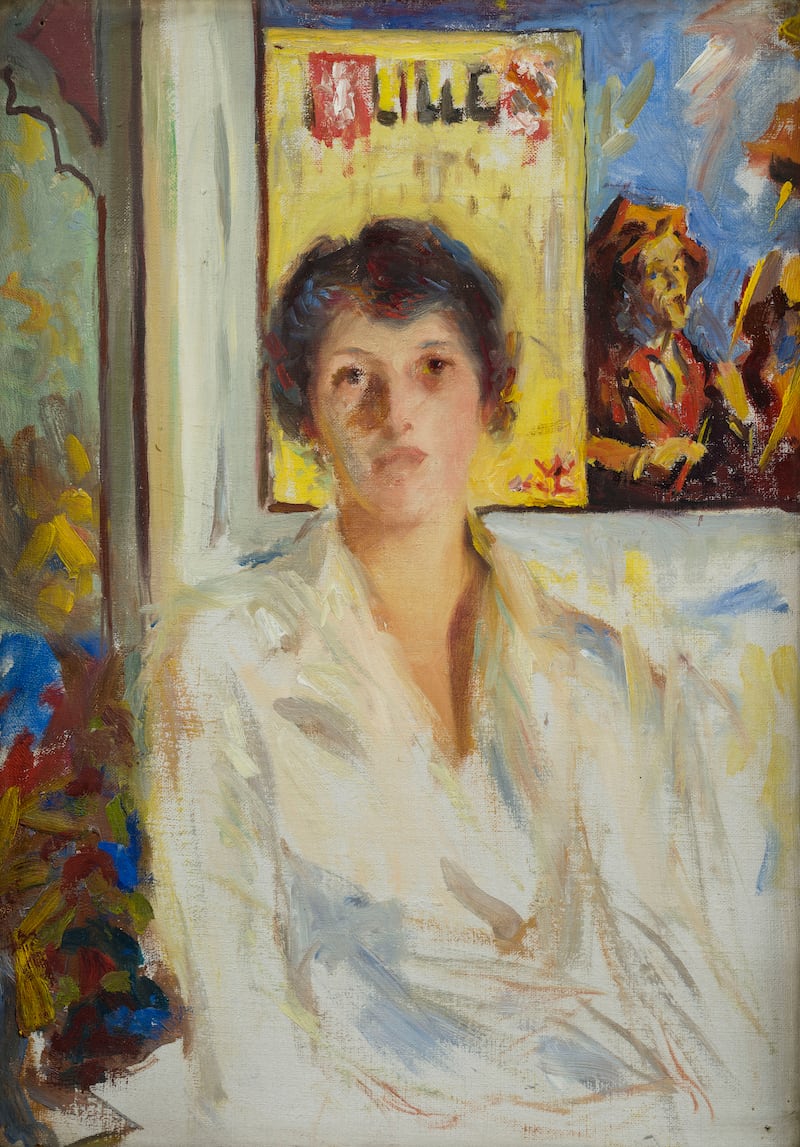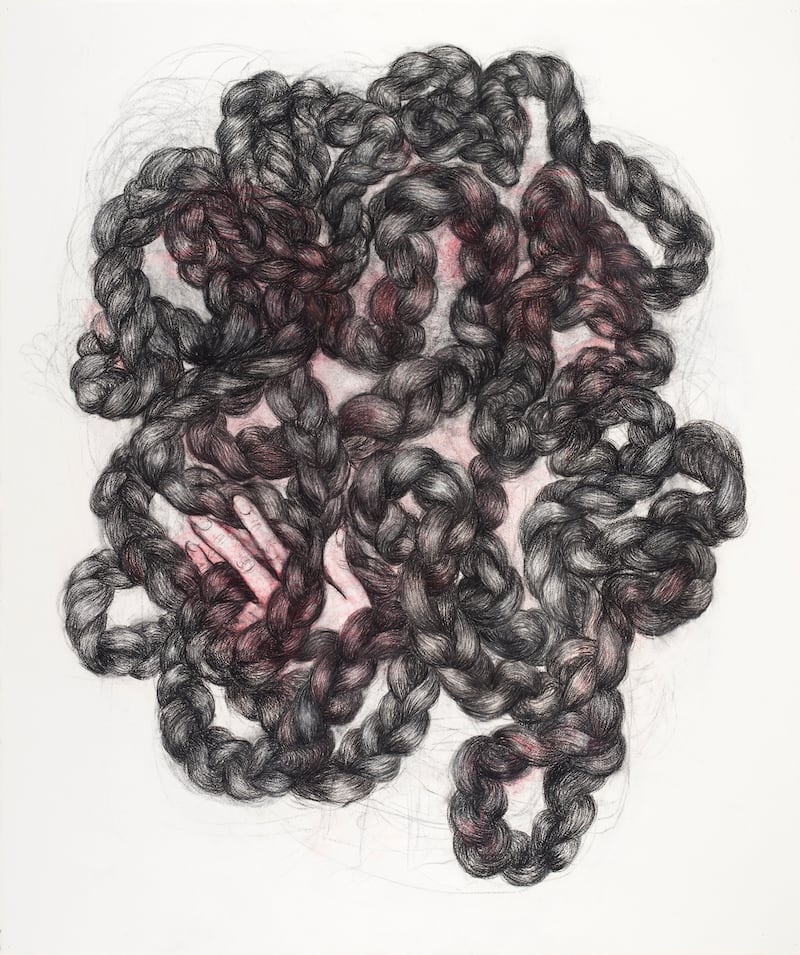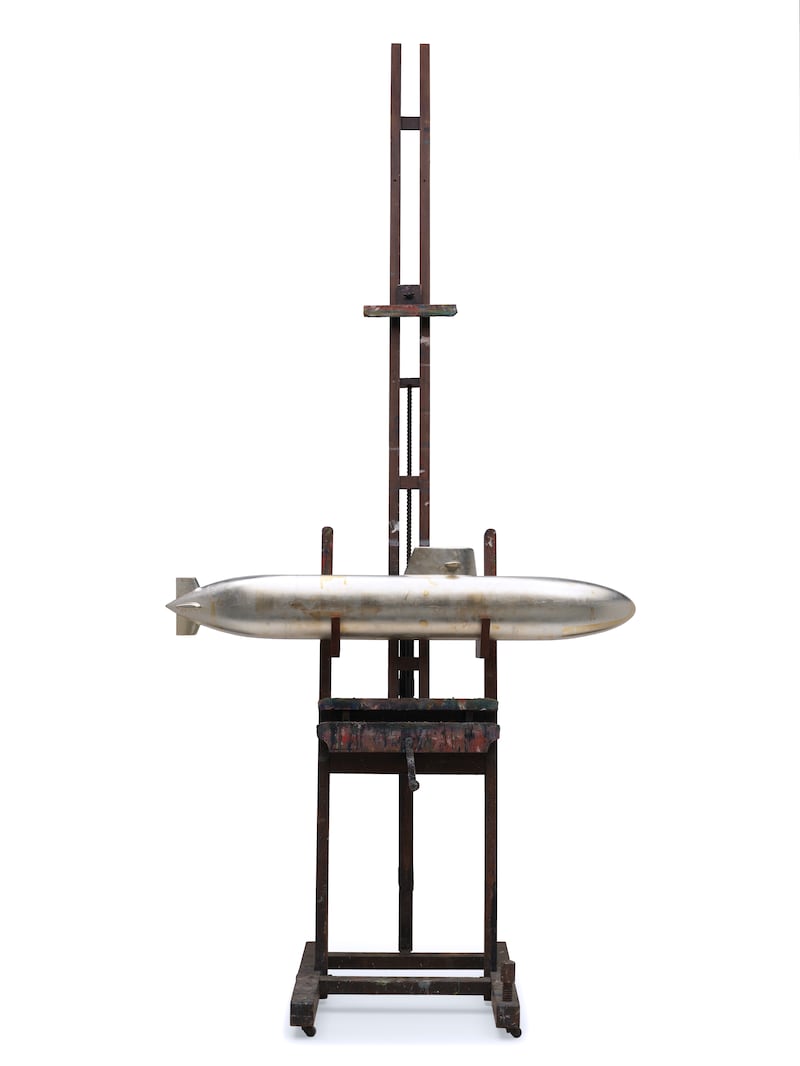On a sunny evening in June, Gina Moxley stands in front of an audience in the old lecture theatre at the Crawford Art Gallery. She is holding a copy of EH Gombrich’s The Story of Art. First published in 1950, the book has sold over eight million copies and been translated into more than 30 languages. To many students starting out, it is the definitive guide, narrating art’s evolution from prehistoric times through ancient Egypt, Greece, Rome and China, exploring Islamic traditions and revelling in the Renaissance before winding up at modernism.
Moxley notes that the cover looks as if it has been carved in stone. In the book’s opening lines, the Austrian-born art historian declares: “There really is no such thing as Art. There are only artists.” The thing is, Gombrich doesn’t mention a single woman artist. The 16th edition, published in 1995, corrects this omission with the inclusion of – count them – woman: the German artist Käthe Kollwitz.
Even as recently as 2008, Brian Sewell, the art critic of the London Evening Standard, was quoted as saying that ‘there has never been a first-rank woman artist. Only men are capable of aesthetic greatness’
Moxley, who studied art at Crawford before becoming a theatremaker, points out this sweepingly awful omission at the opening of I Fall Down, her Cork Midsummer Festival performance, made with the city’s Everyman theatre, which is wittily billed as a “restoration comedy”. As we follow her through the galleries a soprano sings the names of women artists back, as Moxley describes it, into the walls of the building, into the narrative of art. Later in the show we will find ourselves in the old studios on the top floor, sculpting vulvas from pink putty.
Like so many students, I read Gombrich’s defining book without ever fully computing the real meaning of the absence. If women weren’t there, my brain reasoned at the time, it’s because there can’t have been any worth mentioning. Even as recently as 2008, the late Brian Sewell, the then-influential art critic of the London Evening Standard newspaper, was quoted as saying that “there has never been a first-rank woman artist. Only men are capable of aesthetic greatness.” So, to all and any who might wonder whether it’s necessary for the Royal Hibernian Academy and the National Gallery of Ireland to collaborate on an all-female show, the answer is, unfortunately, still a resounding yes.
RM Block
It Took a Century marks both the bicentennial of the RHA and the 100 years that elapsed before that institution elected its first woman academician. Today the RHA has its first female president, the artist Abigail O’Brien, and the National Gallery its first female director, Caroline Campbell. The exhibition itself hangs in the National Gallery – space more usually dedicated to art from the 17th to 19th centuries – and features a work by each of the 59 female academicians, past and present.

Sarah Purser was elected to the RHA in 1923, although she had been an honorary member since 1890. In that she was pipped to the post a year previously, by the today less well-known painter and photographer Margaret Allen. Purser and Allen are represented in the exhibition by portraits, in Allen’s case of an unknown man, in Purser’s a thoughtful study of Jack B Yeats.
When an artist is elected to the RHA they present an artwork to the academy, and is from these and the National Gallery collection that the exhibition is primarily drawn. This makes it a fascinating but perhaps less lively survey than had it been selected from an even wider range. Rachel Joynt and Niamh O’Malley have loaned from their own collections, but there is something rather formal about some of the works, which doesn’t always best serve their makers’ overall output.
[ Na Cailleacha: Women’s art collective explores age and invisibilityOpens in new window ]
Aideen Barry, on the other hand, is represented by an absence. She instead submitted a letter, declining the invitation in protest at the National Gallery’s “ongoing contractual relationship with a service provider which profits from direct provision – a system I believe is inhumane and undignified”. It is a powerful statement, made more so by the context. Campbell says there is also power in the diversity of the work on show. She cites Lillias Mitchell, who set up the weaving department at the National College of Art and Design, although here she is represented by a still life in oils. She goes on to note Kathleen Trousdell Shaw’s marble bust of John Denham; Alexandra Wejchert’s small painted relief; and Eileen MacDonagh’s Kilkenny limestone sculpture in illustration of her point. There is a wonderful charcoal-and-chalk drawing by Alice Maher, one of Joy Gerrard’s moving Protest Crowd scenes, Abigail O’Brien’s photographs of an embroidered heart, Shark Heart Submarine by Dorothy Cross, and Amelia Stein’s photograph of Barbara Warren’s hands. This leads to a parallel with Warren’s own work, a painting from 1990 of Tamarina Beach in Mauritius.

The strength in Imogen Stuart’s wood-carved self-portrait, and the power of Mary Swanzy’s multihued oil painting, Allegory, give the lie to another outdated idea: that women make different art from men, as the French critic Léon Legrange once claimed, and who is quoted in Tina Kinsella’s catalogue essay. “Male genius has nothing to fear from female taste,” he wrote, back in 1860. It would prove to be an unfortunately enduring notion. “Let men busy themselves with all that has to do with great art. Let women occupy themselves with those types of art they have always preferred, such as pastels, portraits or miniatures.” To be fair, it’s true. I do like flower arranging, but I also have periods when I contemplate the brutal annihilation of all those who seek to hold me back. Both are valid in expression, if not in action.
“Historically, the circumstances in which women made art have often been ones that have meant they made art in a certain way,” says Campbell. “But it’s a much more nuanced story than that. Artists are artists. If you’re expressing yourself in a creative way, in a way that feels true to you, it’s going to take a whole variety of forms.” At least the inclusion of the architect Yvonne Farrell’s ESB headquarters, designed by Grafton Architects with O’Mahony Pike, also puts to bed another tedious former truism: that architecture by women would be a softer, curvier alternative to the all those thrustingly significant buildings that, the theory went, could be erected only by men.
There is something about seeing these works at the National Gallery that changes them. Some are pieces I know well and some are new to me, but all seem subtly altered within the majestic halls. Institutions, whether physical or cultural, are powerful things. It Took a Century should therefore be, for want of a better word, a seminal moment in the story of art in Ireland – but it is not actually the first time an exhibition dedicated to women artists in Ireland has been shown at the gallery.
In 1987, when the RHA director Patrick Murphy was at the Douglas Hyde Gallery, he initiated a major exhibition, Irish Women Artists from the 18th Century to the Present Day, to coincide with the Third International Interdisciplinary Congress on Women, held at Trinity College Dublin. The exhibition, curated with Homan Potterton of the National Gallery, was installed across the spaces at the National, the Douglas Hyde and the Hugh Lane Gallery.

Not limited to academicians (the RHA membership is capped by statute, so it can never be encyclopaedic), that earlier exhibition also included, among others, Mainie Jellett, Hilary Heron, Edith Somerville, Wilhelmina Geddes and, in terms of more recent artists, Bernadette Madden, Anne Madden, Sonja Landweer, Mary Farl Powers and Kathy Prendergast. The catalogue has become something of a collector’s item, as scholars and curators turn to it as a resource when trying to remember and rediscover artists made less visible by history than their work and lives deserve.
So has much changed in the generation since that earlier Irish Women Artists exhibition? “Yes and no,” says Murphy. “There is more equality in exhibitions and so on, but the national collections still have a way to go.” He suggests there should be more research, the National Gallery’s current Lavinia Fontana exhibition, which runs until August 27th, being a strong example. “If you look at some of the women artists in the 1987 show, and in this current iteration of the RHA Women Artists, there are some gems waiting to be investigated,” he continues. “Brigid Ganley, Margaret Clarke, Grace Henry: they would make superb candidates for historical one-person exhibitions.”
Sometimes, slow as it is in coming, change speeds up. Towards the end of last year the British art historian Katy Hessel published her antidote to Gombrich’s The Story of Art, the equally weighty and thoroughly researched The Story of Art Without Men. Through its pages we discover Plautilla Nelli, who ran an all-female workshop in her Florentine convent in the 1500s. She was mentioned by Giorgio Vasari in his Lives of the Artists, in 1550, but was soon swallowed up by the then-dominant narrative of history. Meanwhile, the Victorians had a charming habit of changing women’s names on paintings to male ones in the hopes of boosting sales.
Art, even as it is the product of individual creative minds and (sometimes) skilled hands, exists in a continuum. Things and ideas have influence, and it is impossible for anyone, regardless of sex or gender, growing up to develop a robust sense of personhood, unless all people have the space to see themselves reflected. Campbell agrees, underlining how vital it is that the artworks we see reflect the true variety and complexity of lived experience. This has nothing to do with the spurious values of the art market. Value itself has nothing to do with price; in the overheated world of high-end art auctions, it is simply a question of what the super-rich, frequently with problematic value systems of their own, are willing to pay. The year Sewell made his odious comment, a Jeff Koons sculpture sold for £13 million, while Marlene Dumas became the most expensive living woman artist at auction, with a sale of just £3.2 million. I know which artist I prefer.

“As a woman visiting galleries since my childhood, not seeing women on the walls does make you wonder whether this is a place for you. Of course it is, but it’s hard when there’s nobody who looks like you, as a maker or as a thinker, and that the only people you see who are women are often being portrayed in a semi-sexualised position. The world has changed a lot,” Campbell concludes. “But it still hasn’t changed completely. There’s a lot more to be done.”
This includes shifting how we see art historical works. “Parity is an issue when it comes to historic art,” she says. “But art has such power as being a connector, between people, places and times. I prefer to think of art as a continuing conversation. There are works of art that we look at in very different ways to the ways our predecessors looked at them.”
Unfortunately, there was still also a great deal of art we don’t get a chance to look at all: art made by women, but simply not valued or collected or even registered as such. There is also the art that was never made at all because so many women were denied the chance.
At the end of Moxley’s I Fell Down, we linger in the Crawford’s Canova Galleries. Many of the male sculptures have been shrouded for the performance, to create parity, Moxley says. She and her fellow performers hand out pink visiting cards, each bearing the name of a woman artist: Rosemarie Trockel, Janet Cardiff… “If you haven’t heard of them, Google the f*ck out of them,” she says, as we leave our recently created labias on the table, an offering in the august halls of art.
The Story of Art Without Men, by Katy Hessel, is published by Hutchinson. It Took a Century: Women Artists and the RHA, curated by Kate McBride, Dara McElligott, Patrick Murphy and Brendan Rooney, is at the National Gallery of Ireland until October 22nd, 2023






















